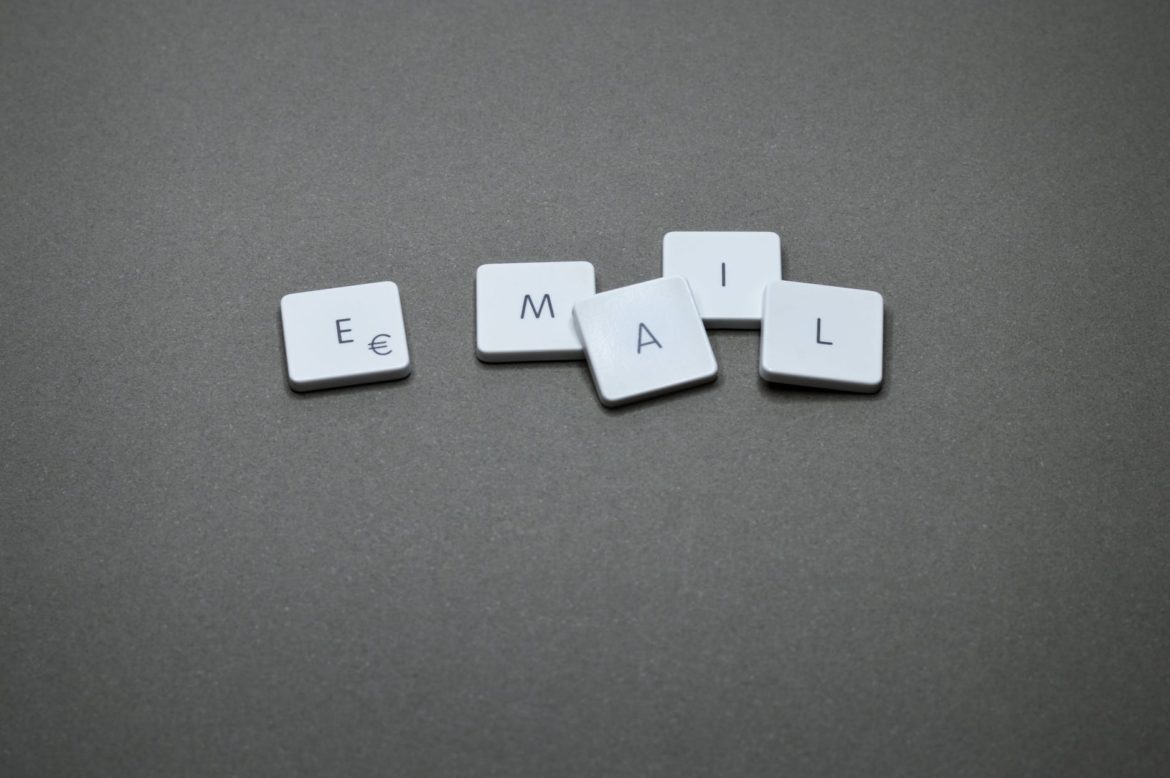Today, One of the most common challenges digital marketers face is how to reduce email bounce rates. If you aren’t an acceptable email bounce rate range, the ROI of your email marketing campaign goes down.
Before discussing the different ways to control email bounce, Let’s understand the meaning and types of email bounces.
When we tried to send an email to someone, sometimes we suddenly get a message that this email has not delivered. This message is called a Bounce Email(Bounce notification).
What is an Email Bounce?
When a sent email makes to the recipient server but encounters an error before making it to its final destination is a Bounce.
A common mistake is that all email failures are simply false bounce. There are two types of Email Failures: 1. Asynchronous, and 2. Synchronous.
Bounce email can be taken care of by a program when sending emails to a distribution list, and most email appropriation list vendors incorporate this capacity.
Such a bounce handler can retry later, unsubscribe the addresses from the list, or make some other action.
The Email bounce rate refers to the total number of emails that bounce compared to the number of emails you send in a percentage.
For example, If you send 20,000 emails and 2,000 of them bounce, your bounce rate would be 10%.
Typically, bounce rates will be a more important topic of concern for email marketers compared to transactional email senders.
This is because marketing email is typically observed as being less important to a recipient and may not perform as well.
Email marketing lists can be too old, less reliable, and naturally will create more bounces. Because of this, email marketers have to remain on top of their bounce rates to control high deliverability.
Email marketing, transactional email is usually a guaranteed email response triggered by a user’s action on an application or website like an order confirmation or email receipt.
This means that the email was most likely sent to an active email address, which will be less likely to bounce.
However, if a transactional email-sender notices high bounce rates, it could be a sign of a big problem within their email that demands direct attention.
Types of bounces
1.Soft bounce
Soft bounce indicates a temporary delivery issue and that is handled differently. A soft bounce means the email address was valid, and the email reached the recipient’s mail server. However, common reasons it bounced back include: mailbox is full, a server is down, and the messages are too long for the inbox.
2. Hard bounce
This email can’t be delivered for permanent reasons. There are lots of reasons emails for emails could be a hard bounce. A hard bounce occurs when an email has been permanently rejected because the email address is invalid, and email addresses don’t exist.
What is a good email bounce rate?
It is essential to understand that a small number of bounces are expecting over the lifetime of an email list subscriber. Their owners change addresses, people change roles or their jobs, and temporary delivery issues can result in a small number of bounces too.
As per benchmark for bounces is less than 2%. Above a 2% bounce rate for your email campaign is worth your attention. If you see a bounce rate over 20%, or even as high as 50% or more excellent, this recommends a significant problem that will want to resolve.
These are the average bounce rates. It is essential to know that every industry has a different bounce rate. This is because every industry targets an appropriate demographic, and demographics have their behavioral patterns.
How do I reduce the email bounce rate?
Since we’ve secured why email addresses bounce, you’re most likely inquiring as to whether you can successfully anticipate high bounce rates. Even though there are a few parts of email delivery that are out of your control, there are various things you can do to ensure you have a low bounce rate.
The Benefits Email Bounce Notification
The benefit of setting up these notifications is that it will notify about clicks, opens, or anything that happens to the emails.
You can easily calculate the open rate and improve your email campaign’s strategy accordingly.
When you receive any bounce notifications coming may alert you to issues in your data.
Firstly, You need to find out the reason why an email bounced and determine if it is a temporary issue or permanent.
If it is a permanent issue, like “Non-existent,” double-check to make sure that the address you added is spelled correctly. Verify your email list with a good email checker. Get your updated list by removing invalid, non-existing email addresses.
There is a chance the address has gone out of date. This happens when one of your contacts changes their jobs or switches their email provider. You have to find another way of contacting them, reach out so you can keep information up-to-date.
Unsure whether the issue is temporary or permanent? Take a look at your contact’s bounce frequency. The essential thing is to remove any address with ongoing issues. It will affect your email open rate positively and reduce your number of bounces.
6 Reasons Emails Bounce (And How to Improve Your Bounce Rate)
1. An invalid or non-existent email address
If the email bounce is marked as a “non-existent or invalid email address,” the email address could have a typo or the person may have left the organization.
There is a chance that the contact gave you a false email address, which can be the case if you are offering something online exchange for an email.
It’s essential to review the contacts and see if there are any glaring typos in the email address. And if there are not available, try to reach the contacts by other means to confirm the email address.
2. Undeliverable Email (Email address not found)
If bounce emails are “Undeliverable” category, that means receiving email server is temporarily unavailable, was overloaded, or email address could not be found.
A server can not found have crashed or in under maintenance, so this means waiting to send the email to the address again. Though if the email address repeatedly bounces on multiple emails, it means the server is gone for good.
3. Mailbox is Full
When a mailbox is full, your emails will bounce back. They won’t be able to receive any emails due to space. Sometimes it means that the contact is no longer using that email address.
With non-existing emails, you want to follow with the contact by phone or email to check that the email address is valid or not.
4. Auto-Reply/ Vacation
If someone is on holiday or can’t check their email, your emails will bounce to them.
It is necessary to note that this type of bounce means your email was delivered successfully to the inbox.
You have to precisely monitor how often this email address ends up in this category. The person hasn’t returned from vacation if a months go. You may consider removing the contact.
5. Blocked Email
If email addresses are placed with the “Blocked” category, the receiving server has blocked the incoming emails.
This happens in the case when government institutions or schools, where the server has blocked the incoming email.
To solve this issue, you need to get in touch with the contact and need to request them to unblock IP addresses.
6. Other
Bounces that don’t give the server an explanation behind bobbing are placed in this category, so it can imply that the email bounced for one reason above or something different.
It’s essential to keep for these contacts, as well, to check whether the bounces continue recurring.
How email bounce rate affect your email marketing campaign?
Paying observation of the rate of bounced emails is important for a difference of reasons. Here are some of the ideas you need to keep a close lookout on bounced emails and assure they remain absolutely within safe limits:
- They can decrease your email delivery rate
- The lower your sender reputation according to ISPs
- They hurt your email marketing ROI
- They can induce you to be labeled a Spammer
- Your Email Service Provider can penalize or decline to carry your email
Why Emails Bounce
Through an email service provider whether you are sending or
your SMTP server, your emails are always subject to the SMTP rules for acceptance or rejection of emails by the recipient’s mail server.
Each email must pass successfully through multiple phases before it reaches the intended recipient.
For the first, the emails are sent from your software (email sending) to your SMTP server. Your messages are given to their SMTP server if you are with an email service provider.
The SMTP server sets the email messages in the line. Then it builds a conversation with the recipient’s SMTP server by attaching through the port 25 to the recipient’s SMTP server.
The recipient’s mail server determines the sender’s server whether or not it is available to accept mail. If the recipient’s mail server approves the emails, they are considered assent.
If the recipient’s server has decided that if it is not receiving emails from the sender for any reason, the server rejects the message, and it will consequently bounce back to the sender.
So, when an email is passed to the sender without being received by the recipient’s mail server, the email is called a bounce.
There are lots of various purposes why emails bounce, and when it occurs, a “return to sender” message is sent by the recipient’s mail server that defines the reason for the bounce.
How Bounce Rate Impacts Deliverability
In the actual world, a high bounce rate leads to very unpleasant outcomes that every marketer should be aware of:
1. Bad reputation. Mail-box providers observe and watch for IP addresses that continuously send messages to invalid users, and they adjust the sender’s reputation, respectively.
2. Low Inbox placement. Mailbox providers monitor bounce rates for every email marketing campaign you send and use that information to decide where to deliver your emails in the future.
A lot of mailbox providers have known to block the sender’s email domain for repeated sending to email addresses from non-existing domains.
3. Blacklist. High bounce rates have seen frequently, and it gets the sender’s IP address land on blacklists maintained by ISPs and anti-spam organizations.
4. Account Suspend. Each email service providers have their strict policy as to relates to bounce rates. They will reject the user’s email account if the email marketing campaign sent by the user generates a complaint rate, which is beyond the ESP’s allowed limit.
The email service provider does this because high bounce rates can land sending their IPs on blacklists, and likely affect other users of their service.
5. Money Lost. Email service providers charge you for each email you are sending. Invalid email addresses increase the cost of your email marketing campaigns without any return on investment(ROI).
To overcome this before sending emails, you need to verify your email list through the Email Verification Service, which helps you to remove invalid email addresses.
By doing this, you can realize that you can’t ignore bounce emails and should address them after every email marketing campaign.
So, what’s the bottom line?
High bounce rates spoil your sender reputation, email deliverability, and put account with the email service provider at high risk of being close.
For that, you need to make sure that you have a process of removing complaining recipients and whose email addresses have bounced from your subscriber list.
Author Bio:
Brenda R Brenda R. is Digital Marketing Executive at MyEmailVerifier. She is an expert in Content Writing, Inbound marketing, and lead generation. Brenda’s passion for learning about people led her to a career in marketing and social media, with an emphasis on her content creation. To see more posts, you can check out MyEmailVerifier Blog.




